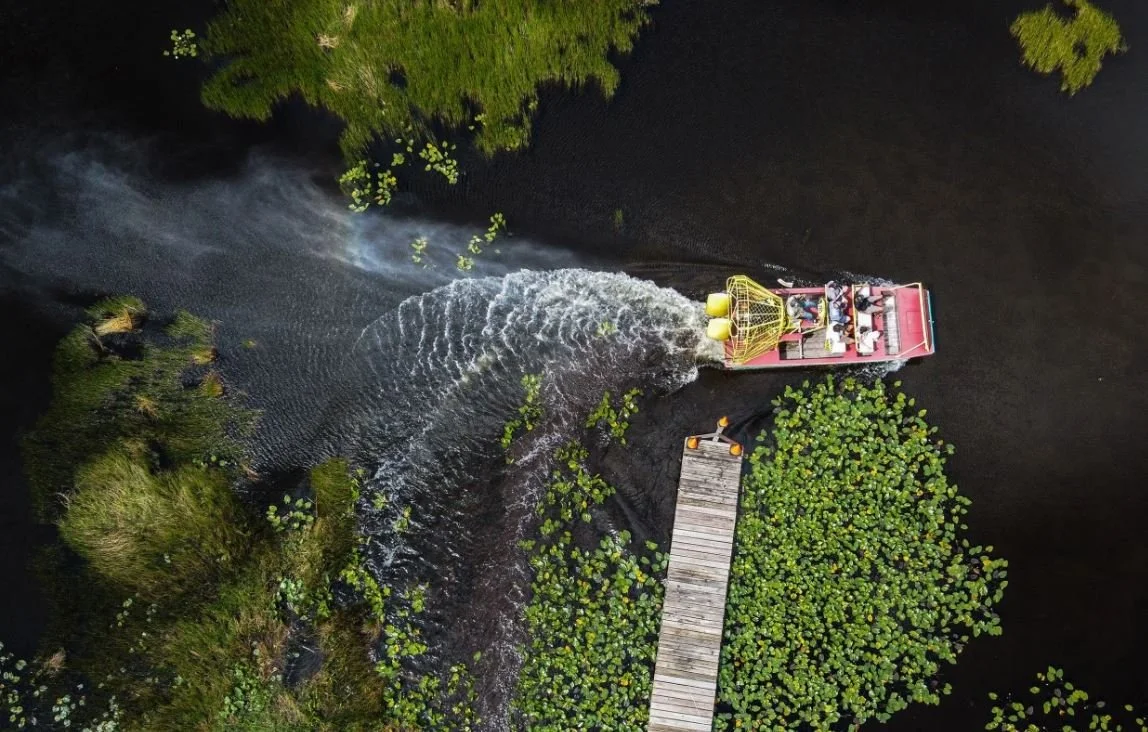Lucas Thompson
Under the new definition of "waters of the United States," more wetlands, lakes and rivers will qualify as federally protected.
An airboat hovers over wetland in Everglades National Park, Fla., in September 2021.Chandan Khanna / AFP via Getty Images file
The Environmental Protection Agency and Army Corps of Engineers on Friday announced a new definition of "waters of the United States," a classification that has been debated for decades.
At issue is which types of waterways — wetlands, rivers, lakes, etc. — are protected under the Clean Water Act, which was signed into law 50 years ago. The act regulates water pollutants and empowers the EPA and the Army Corps of Engineers to define which particular bodies of water are protected by law. Protected bodies of water qualify for federal programs pertaining to oil spill prevention, water quality regulation and more.
During the Obama administration in 2015, the EPA established a relatively broad definition of waters of the United States, or WOTUS, that included navigable waters such as the Mississippi River and the Pacific and Atlantic oceans, as well as rivers, lakes and wetlands that crossed state borders. But in 2020, the Trump administration limited the types of waterways that received the federal protections, excluding much of the country’s wetlands and smaller waterways.
The new definition announced this week instates similar protections to those that were in place before 2015, while also clarifying certain qualifications for protected waters.
Like the 2015 rules, navigable waters, oceans, and interstate waterways are protected by default. Tributaries that flow into and affect larger bodies of water, as well as wetlands near protected waters and some additional lakes and ponds can also be protected. To qualify, such smaller waterways must meet a set of standards that focuses on their permanence and their interconnectedness with other bodies of water. These updated standards are, in part, a response to several Supreme Court decisions in cases that challenged past definitions of WOTUS over the last two decades.
In a news release, the EPA said the new rule is intended to "reduce uncertainty from changing regulatory definitions, protect people’s health, and support economic opportunity."
"What we are doing with this final rule is establishing a clear and reasonable definition of waters of the United States," Radhika Fox, the assistant administrator for the EPA’s Office of Water, told NBC News.
She added, "We set water quality standards for lakes and streams all around the country, and that is what makes sure that if you’re eating out of that lake and if you’re swimming in that stream that it’s safe for you."


